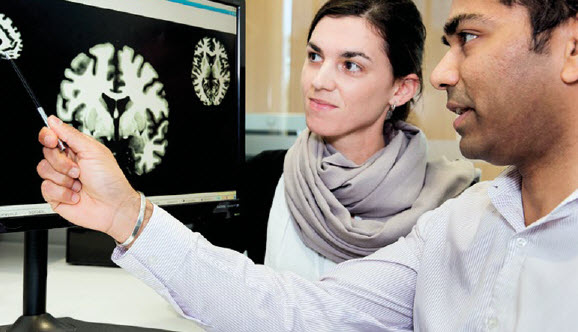June 10, 2015 Print
Researchers at Westmead Millennium Institute for Medical Research (WMI) have developed a technique that may provide the first reliable test of whether a patient has a unipolar depressive disorder or if they have bipolar disorder.

A three year study supported by the National Health and Medical Research Council of Australia, ultimately aims to pinpoint indicators in the brain that will help doctors and psychologists ensure bipolar patients receive appropriate treatment much earlier in their illness.
Differentiating bipolar from unipolar depression is a major clinical challenge. Approximately 60 per cent of bipolar patients are initially and incorrectly diagnosed as having depression.1
The two mental illnesses are on opposite ends of the depressive spectrum, however they present similar symptoms and behaviours until individuals with bipolar have their first manic episode, the only clear indicator for a diagnosis of bipolar. Misdiagnosis means bipolar patients are prescribed anti-depressants, instead of the required mood stabilising medications, and will not get better.
A unique imaging and analysis technique developed by WMI researchers, called Connectomics, may provide the answer; clear markers that differentiate between depressed and bipolar brains.
Connectomics involves mapping connections in the brain, and the new technique allows researchers to study the brain as a whole complex interconnected network. This is a significant improvement from widely used approaches that inspect siloed areas of the brain based on existing theories.
The technique uses MRI technology to look at movement of water and blood oxygen levels in the brain to map structural and functional connections.
“What we’re essentially doing is dipping into the circuitry of the brain to better understand it as a whole connected organ. For this study, we are looking for specific identifiers or pathway connections for patients with bipolar disorder,” said Dr Mayuresh Korgaonkar, the study head and director of Brain Dynamics Centre at WMI.
Bipolar disorder is the sixth leading cause of disability in Australia and is ranked in the top 10 most debilitating illness worldwide.2
“Misdiagnosing bipolar as depression can compound the effects of the illness and result in potentially damaging consequences for patients,” said Dr Korgaonkar. “For example, juvenile bipolar disorder which is untreated due to late diagnosis is associated with self-harm, family breakdown, substance and alcohol abuse, and reduced education.
“Furthermore, prescription of antidepressants and inappropriate medications in young bipolar patients due to misdiagnosis has been associated with a greater chance of switching to mania, a poorer prognosis, increased chances of suicide, and greater health care costs.
“Our goal is to provide a simple test that will help doctors and psychologists identify much earlier if a patient is bipolar, before they have a manic episode, and to get them on the right treatment path as quickly as possible to help their recovery,” he said.
Dr Korgaonkar, together with colleagues at Brain Dynamics Centre, were responsible for the discovery that MRI scans can help to predict the type of treatment that may be effective for depression patients.
They then developed the cutting edge Connectomics technique and revealed that there are two key networks in the brain most affected in depressed patients – the default mode network and the frontal-subcortical network – providing doctors with a more reliable assessment tool for depression.
Further analysis of data from MRI scans of depressed and non-depressed individuals identified that the wiring in the brains of depressed patients is different than in non-depressed people, a finding that provided novel insights into the pathogenesis of depression and may lead to more targeted treatment plans for depression.
“With nearly half of the population experiencing a mental disorder at some stage in their lives, a focus on medical research that will deliver better insight and understanding of the circuitry and networks in the brain is critical,” said Dr Korgaonkar.
“It’s possible this new technique can be applied to the myriad of mental disorders affecting Australians and lead to enhanced and new avenues for treating patients with mental illness. For example, future therapies and pharmacological interventions could be tailored to stimulate specific areas and connections of these networks to reset the structural and functional wiring patterns in the brain,” he concluded.
1. Goodwin FK, Jamison KR. Manic-depressive illness: Bipolar disorders and recurrent depression. New York, N.Y.: Oxford University Press; 2007
2. WHO, The global burden of disease: 2004 update, Geneva, Switzerland, 2008